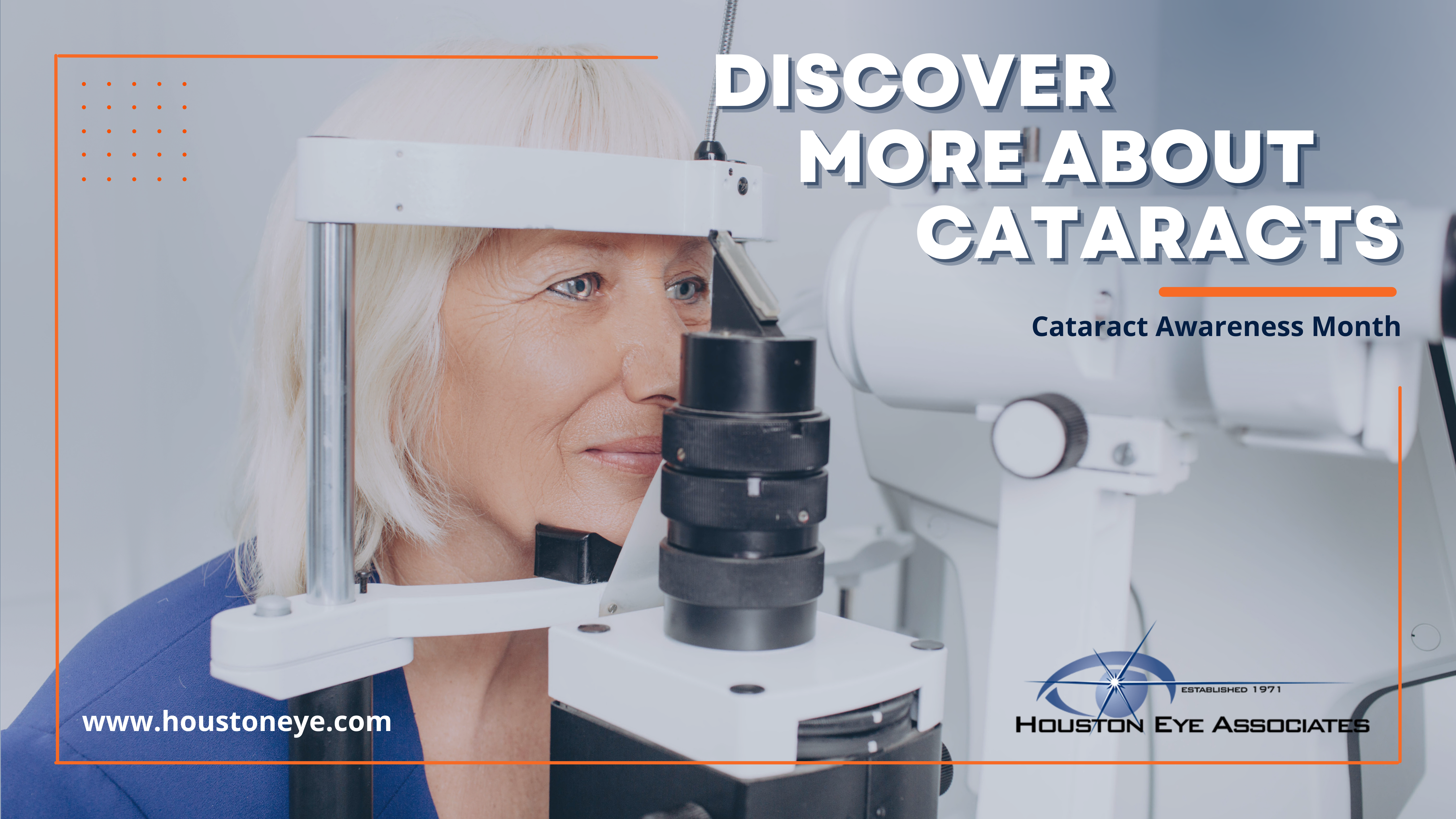One of the Leading Causes of Blindness
Cataract Symptoms
Your eye works a lot like a camera. Light rays focus through your lens onto the retina, a layer of light-sensitive cells at the back of the eye. Similar to photographic film, the retina allows the image to be “seen” by the brain. Over time, the lens of our eye can become cloudy, preventing light rays from passing clearly through the lens. The loss of transparency may be so mild that vision is barely affected, or it can be so severe that no shapes or movements are seen—only light and dark. When the lens becomes cloudy enough to obstruct vision to any significant degree, it is called a cataract. Eyeglasses or contact lenses can usually correct slight refractive errors caused by early cataracts, but they cannot sharpen your vision if a severe cataract is present. The most common cause of cataracts is aging. Other causes include trauma, medications such as steroids, systemic diseases such as diabetes, and prolonged exposure to ultraviolet light. Occasionally, babies are born with a cataract.
Cataracts typically develop slowly and progressively, causing a gradual and painless decrease in vision. Other changes you might experience include:
- blurry vision
- glare particularly at night
- frequent changes in your eyeglass prescription
- a decrease in color intensity
- colors seem faded
- double vision.
As the eye’s natural lens gets harder, farsighted (presbyopic) people, who have difficulty focusing up close, can experience improved near vision and become less dependent on reading glasses. However, nearsighted (myopic) people become more nearsighted, causing a worsening in their distance vision. Some kinds of cataracts affect distance vision more than reading vision. Others affect reading vision more than distance vision. Reducing your exposure to ultraviolet light by wearing a wide-brimmed hat and sunglasses may reduce your risk of developing a cataract, but once one has developed, there is no cure except to have the cataract surgically removed when it affects a person’s ability to do their normal daily activities.
Learn More About Cataract Surgery
With a routine, outpatient surgical procedure, an ophthalmologist can remove the cataract, making either a small incision (phacoemulsification) or a larger incision (extracapsular extraction). Usually, a synthetic intraocular lens (IOL) is inserted at the time of cataract extraction to replace the focusing power of the natural lens. IOLs can be monovision (fixed focus for a preset distance) or multifocal, which allows focused vision at distance, intermediate, and near. The time to have cataract surgery is when the cataract is affecting your vision enough to interfere with your normal lifestyle. Cataract surgery is a very successful operation. One and a half million people have this procedure every year in the United States, and 95% have a successful result. As with any surgical procedure, complications can occur during or after surgery, and some are severe enough to limit vision. But in most cases, vision, as well as the quality of life, improves.
Choosing the Cataract Surgeon that is Right for You
Because of the many intraocular lens implants available, including Multifocal lens implants and Toric lens implants which are known as Premium Lens Implants, and your individual vision correction needs, it’s important to discuss all your options with a qualified eye surgeon. We invite you to make an appointment with one of our dedicated ophthalmologists at Houston Eye Associates. As with all elective eye surgery procedures, you should ask your ophthalmologist for a complete list of the risks and complications associated with cataract surgery, as well as the potential benefits and rewards that come with taking this important step.
Click Here >>> Take the Cataract Self-Test Today!
Disclaimer
If you are experiencing any of these symptoms, we recommend consulting an ophthalmologist.
This blog is for informational purposes only. For specific medical questions, please consult your eye care provider. You can schedule an appointment with a Houston Eye Associates ophthalmologist by calling 713-668-6828.

